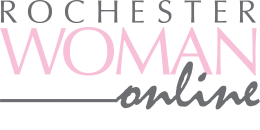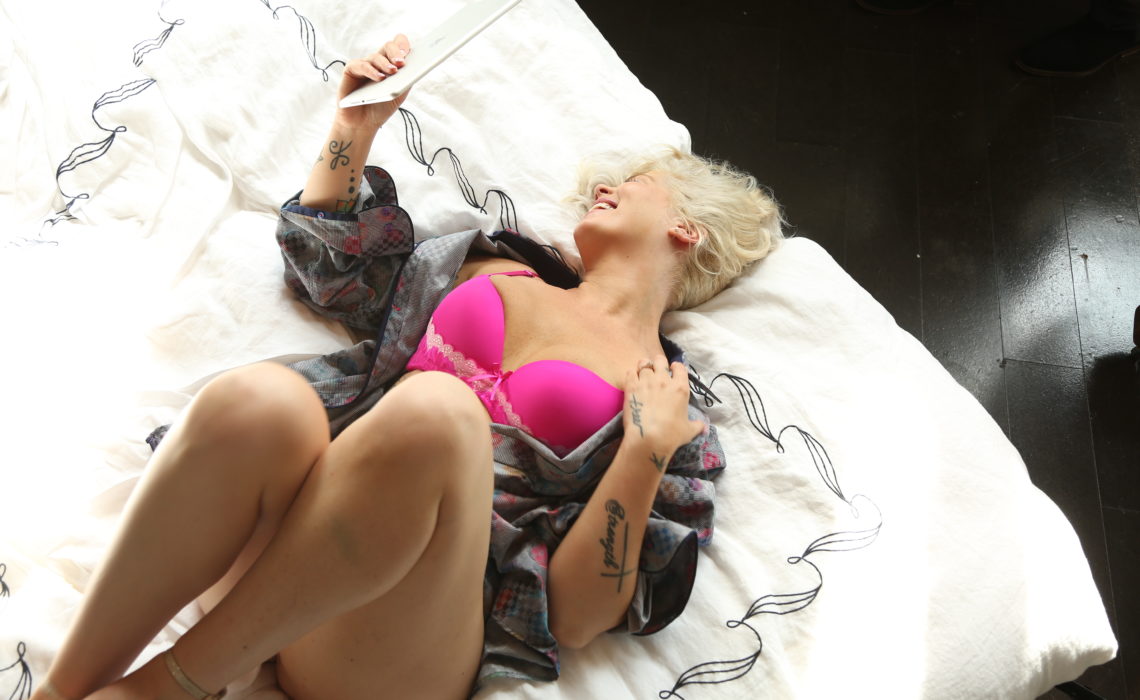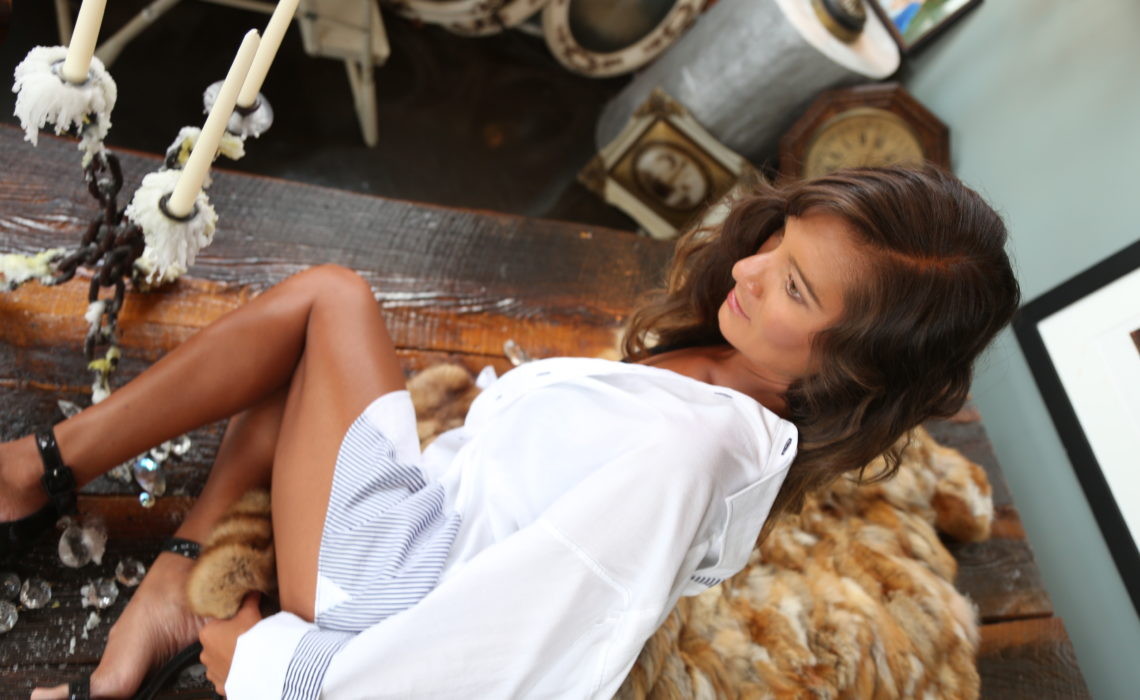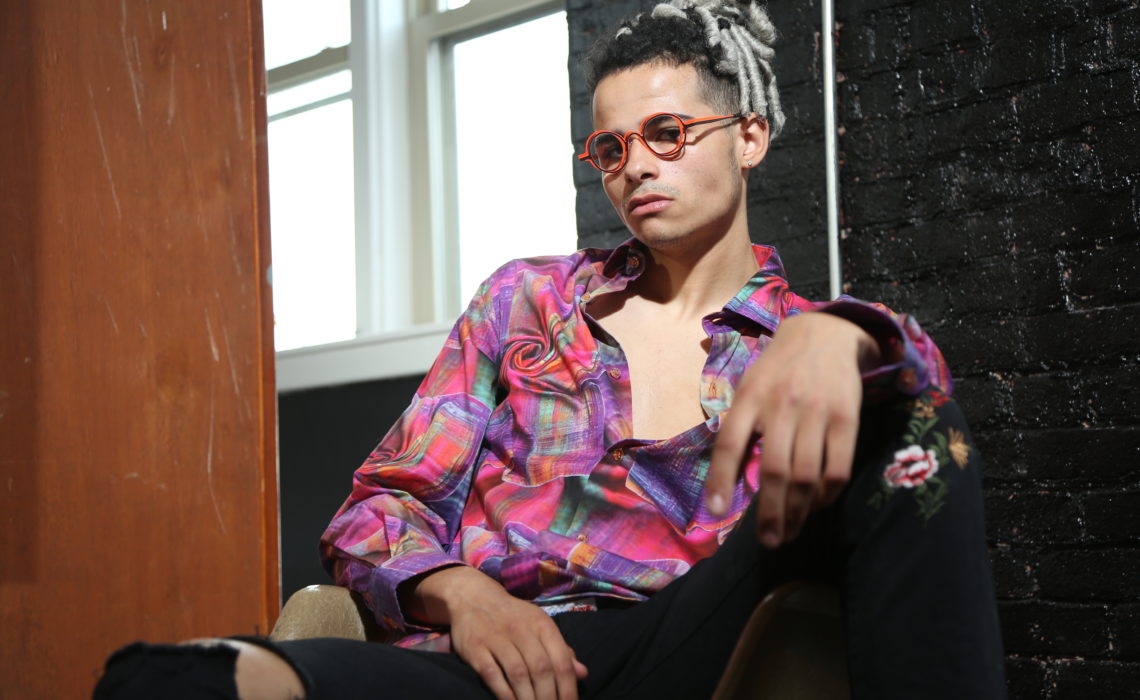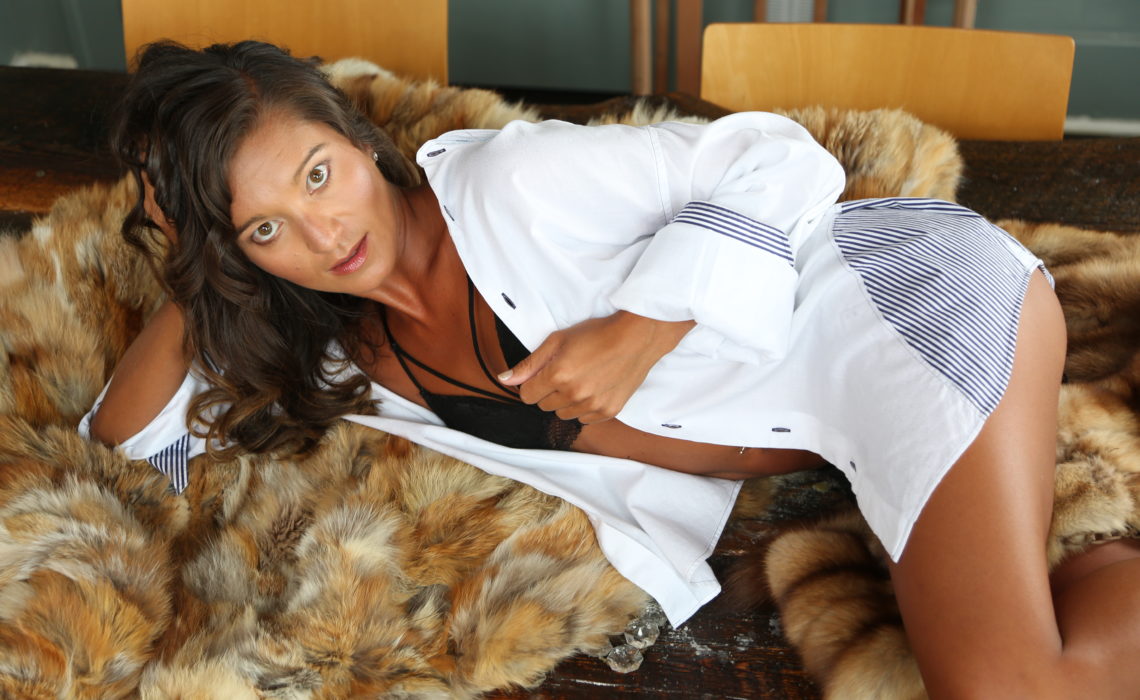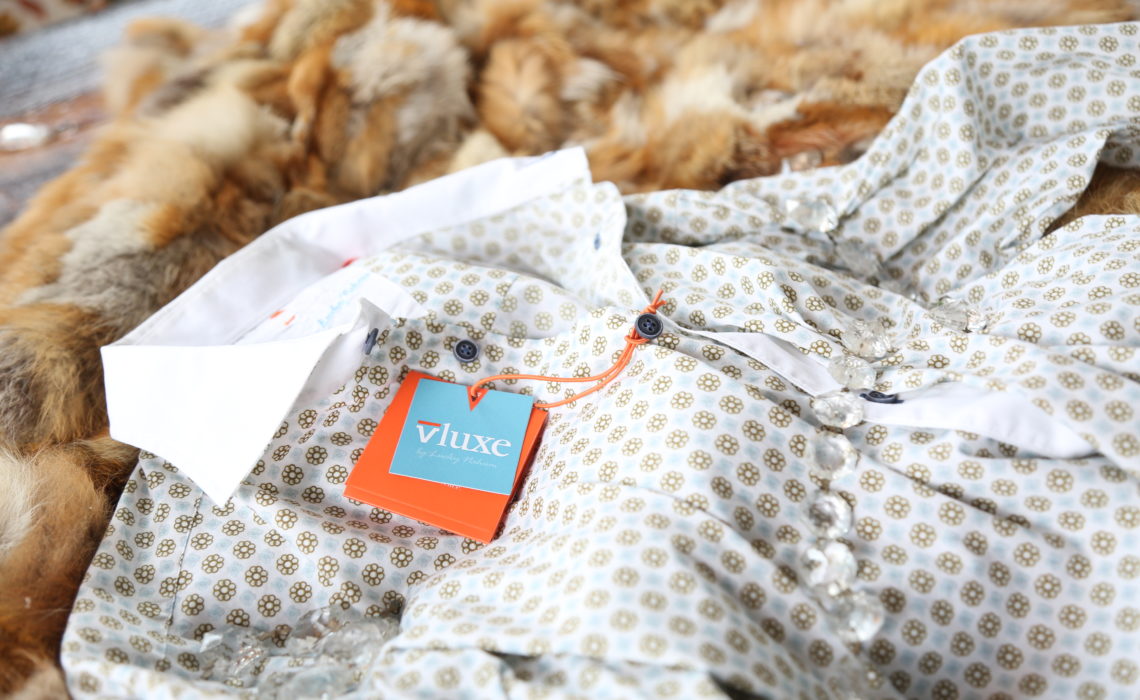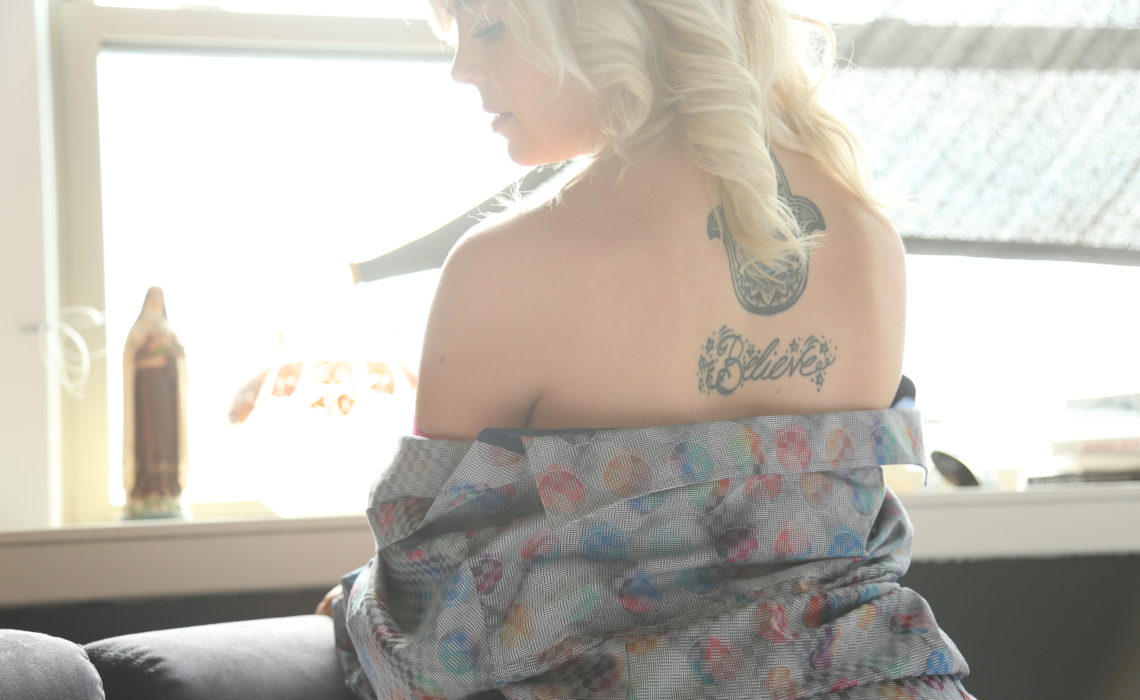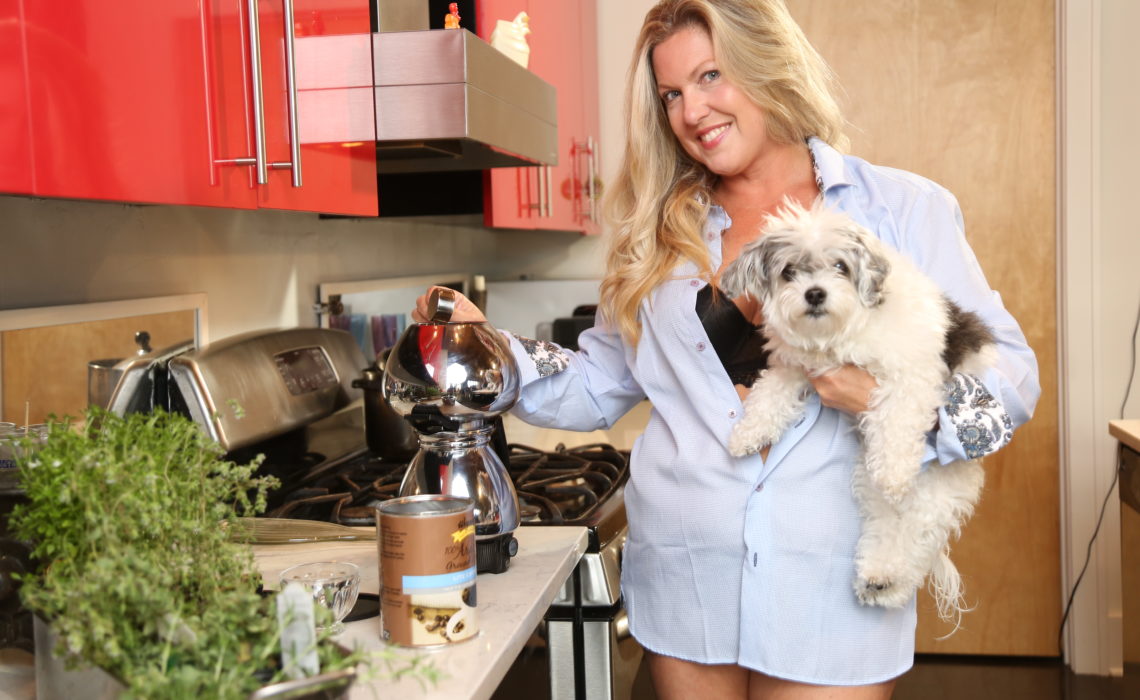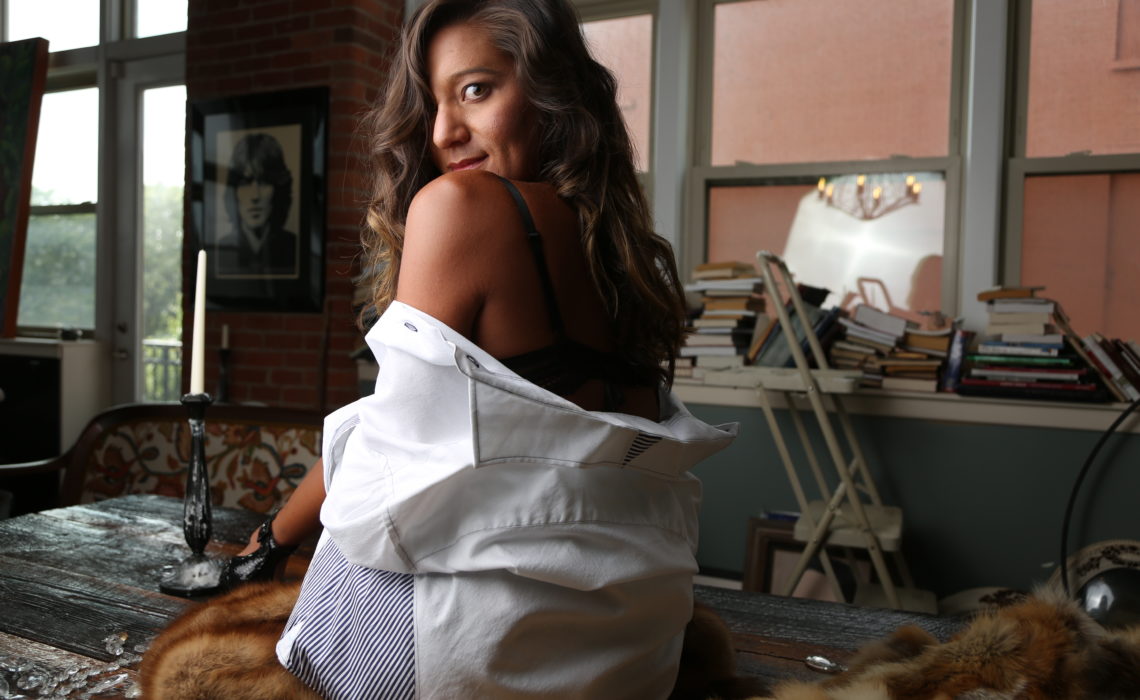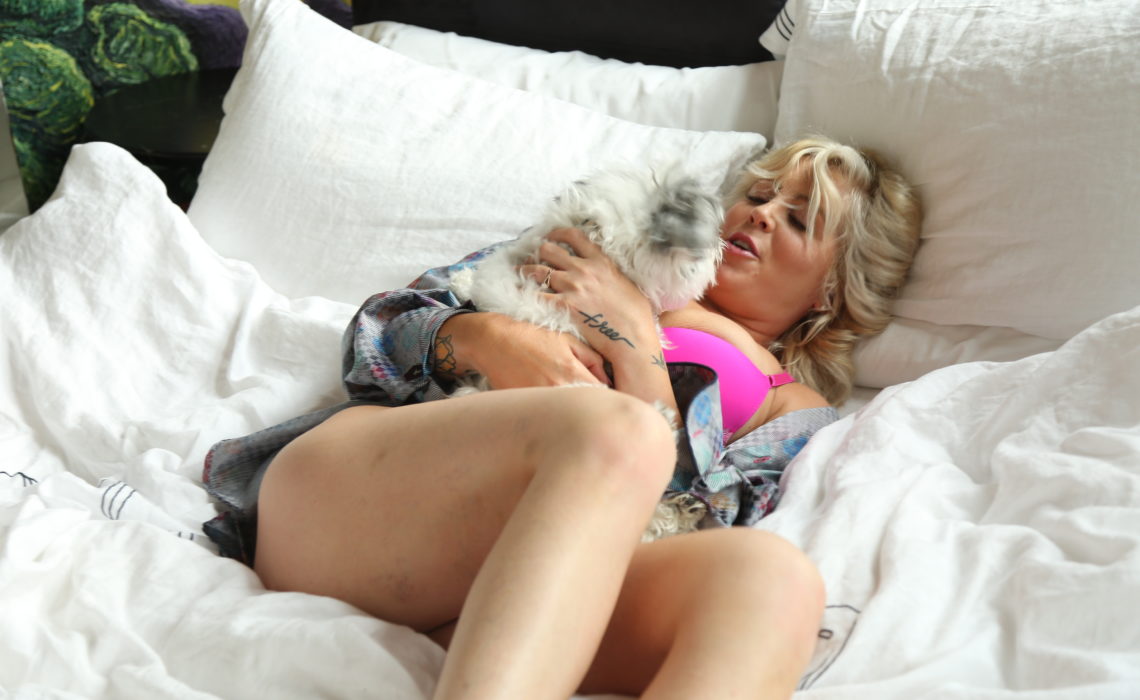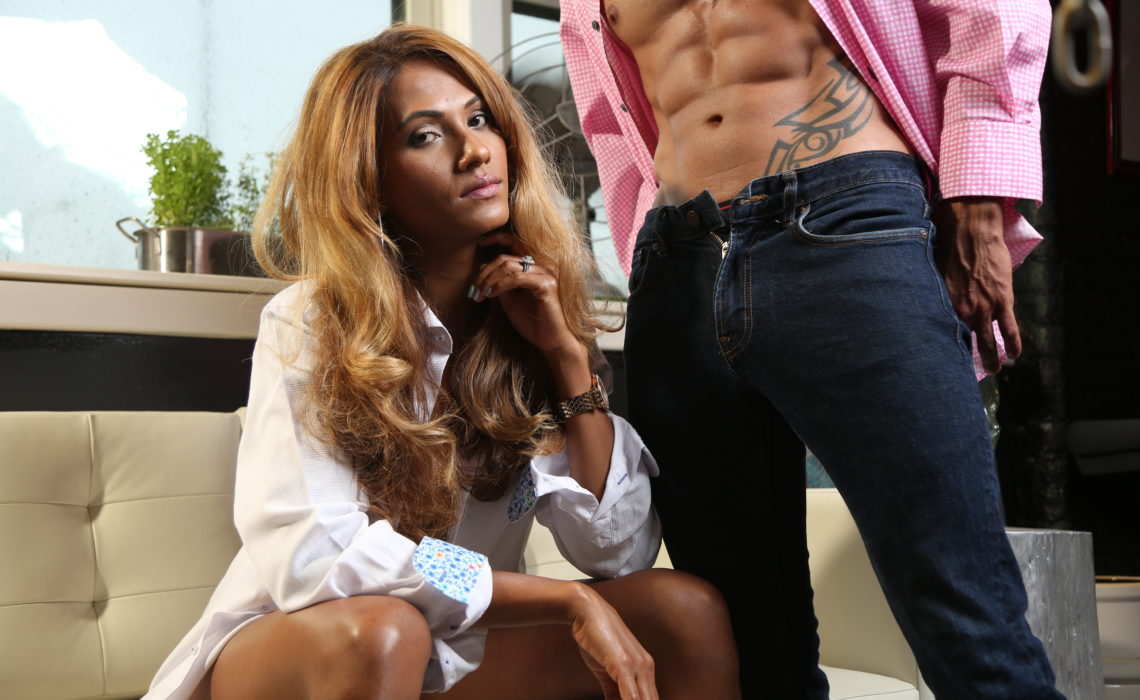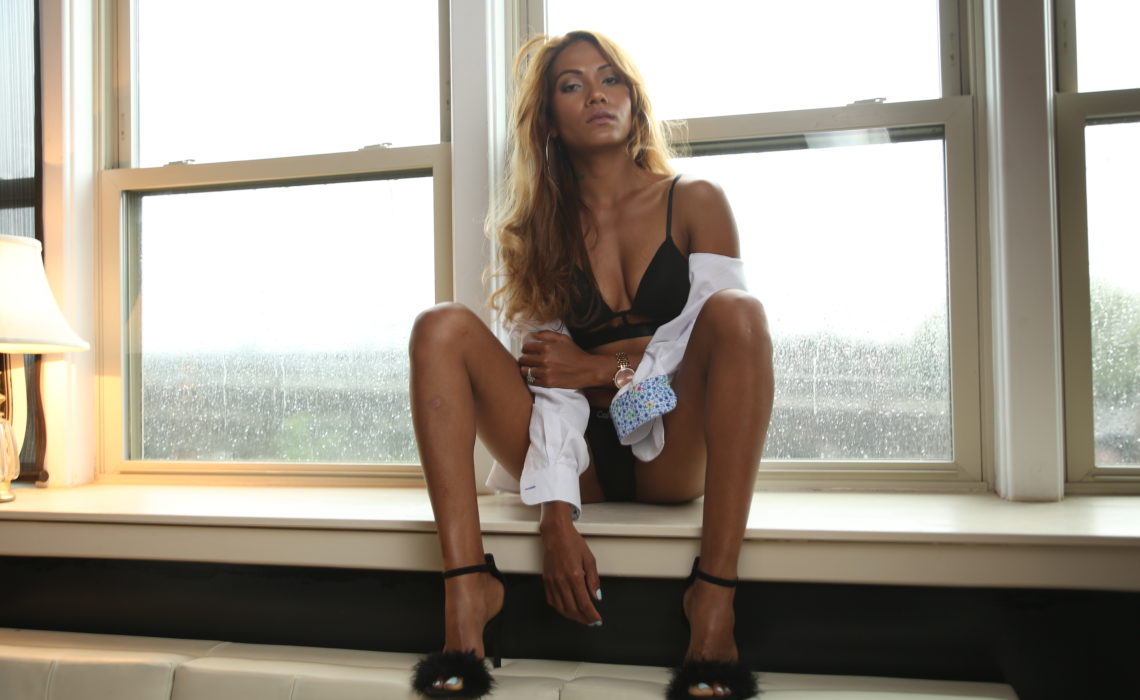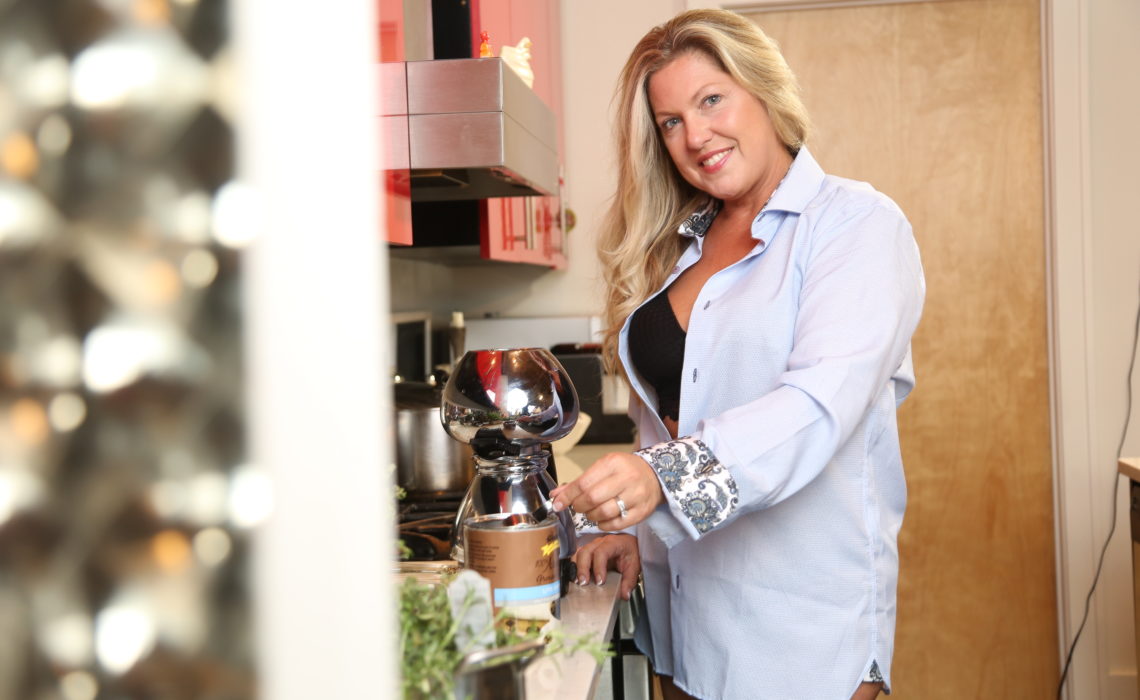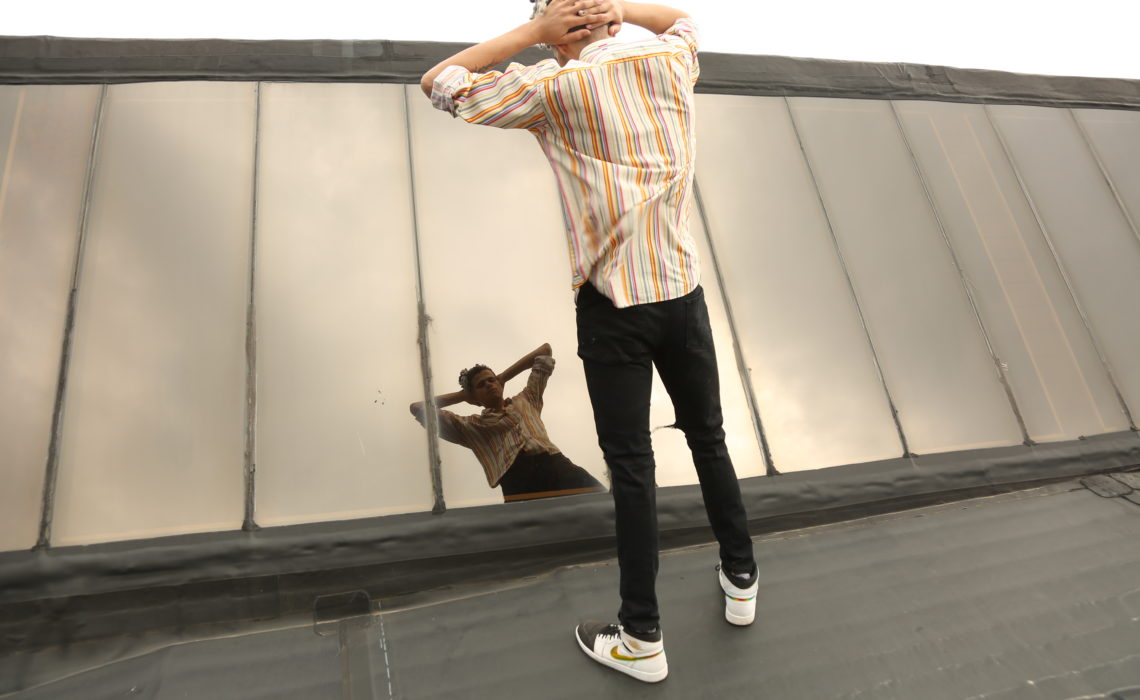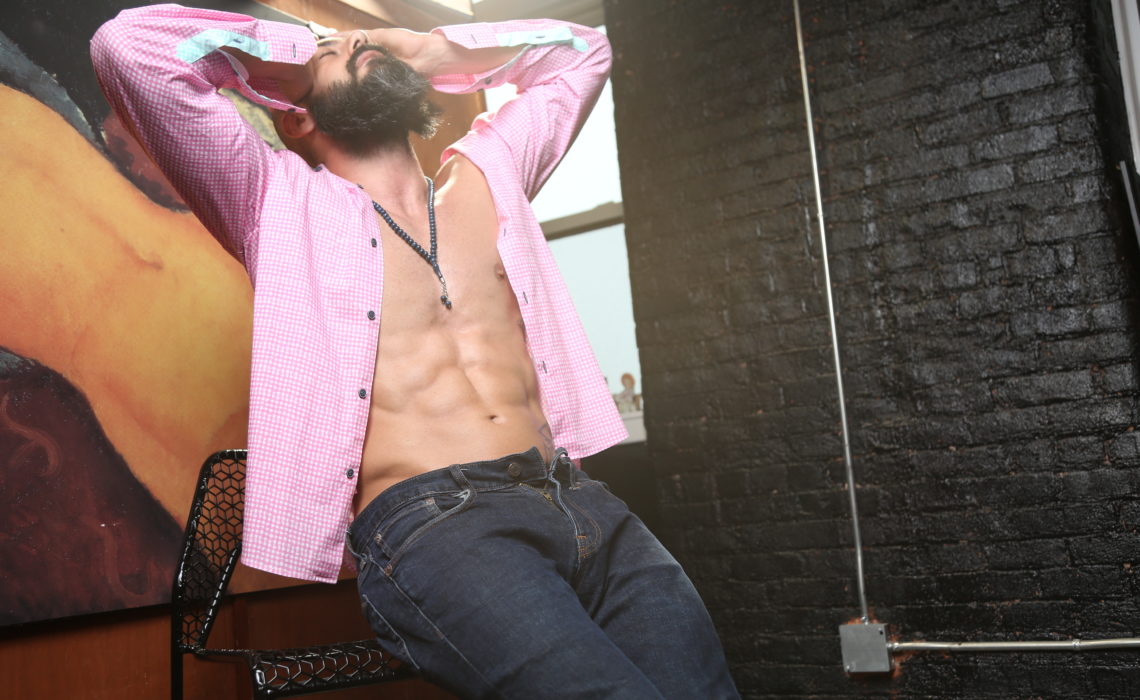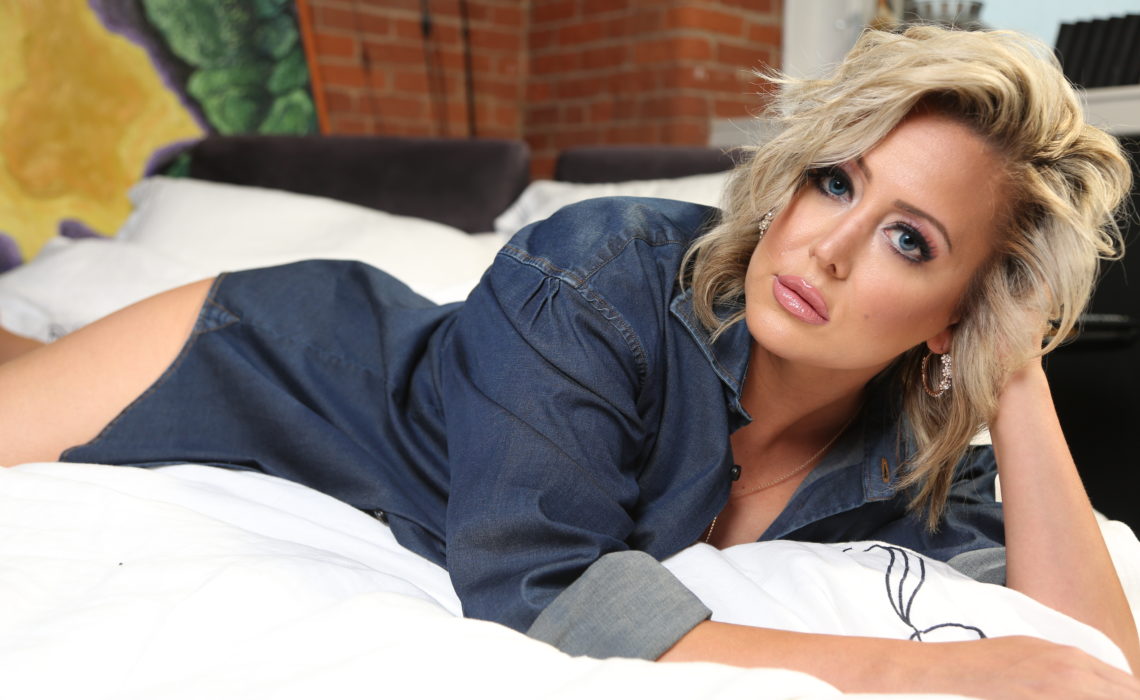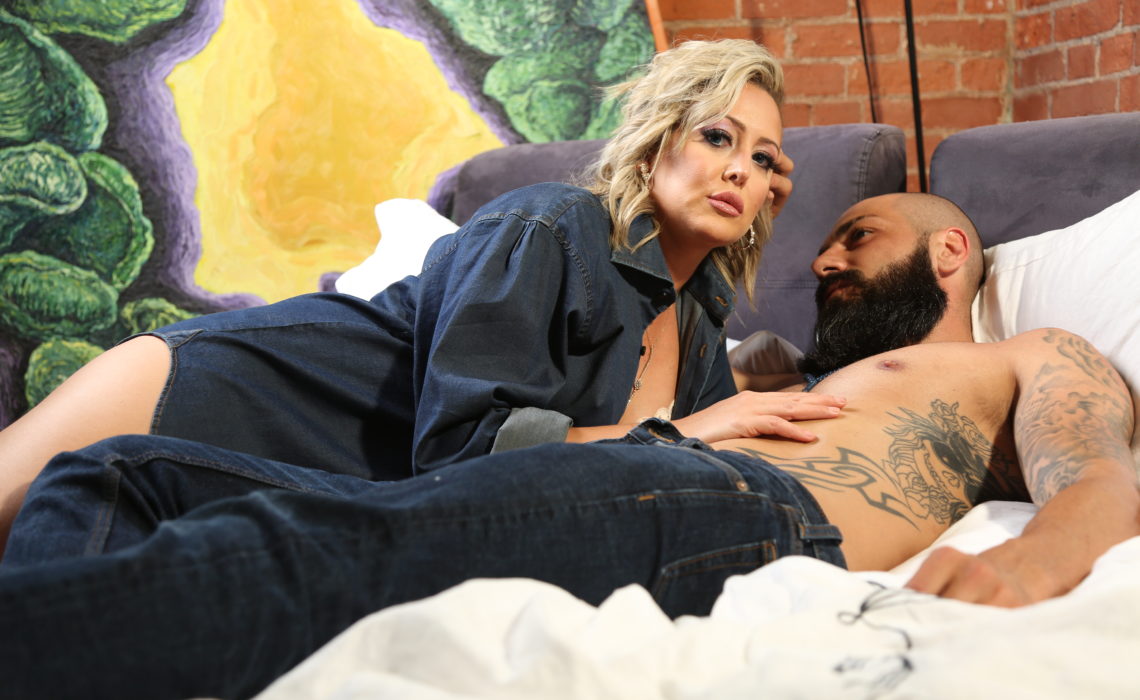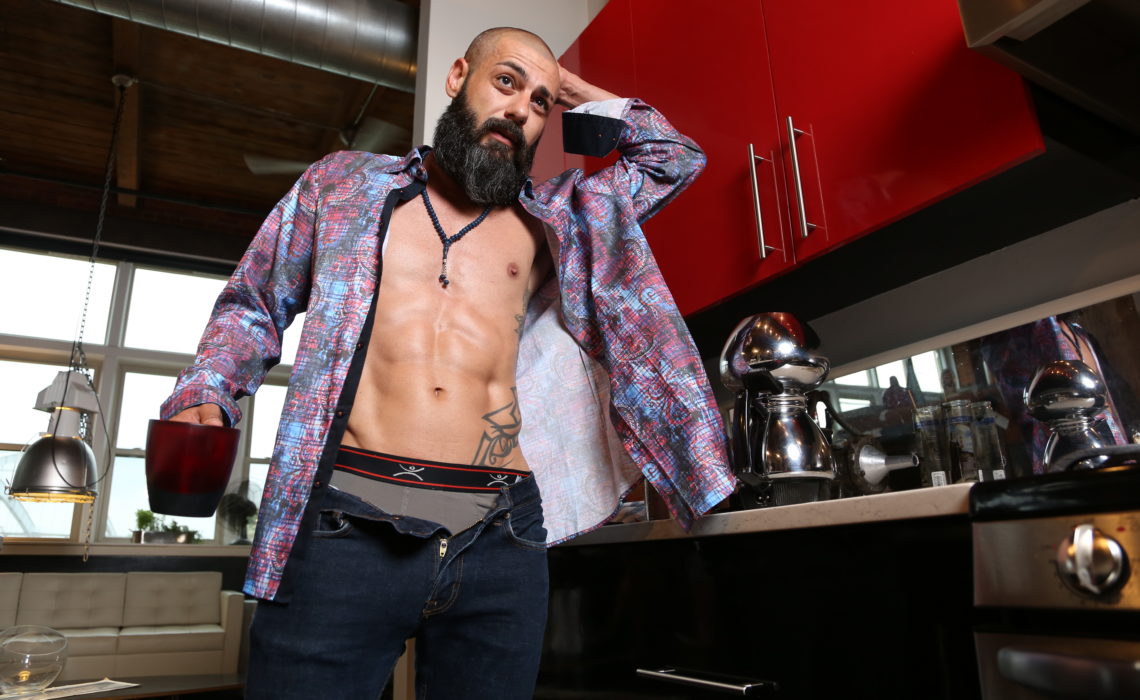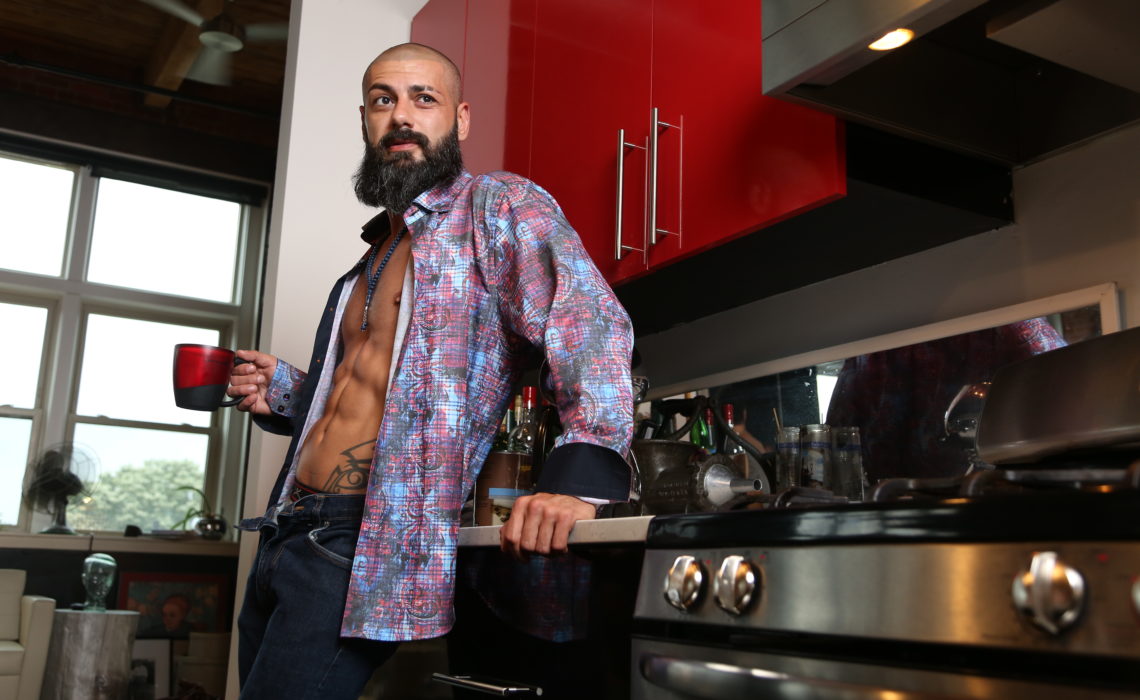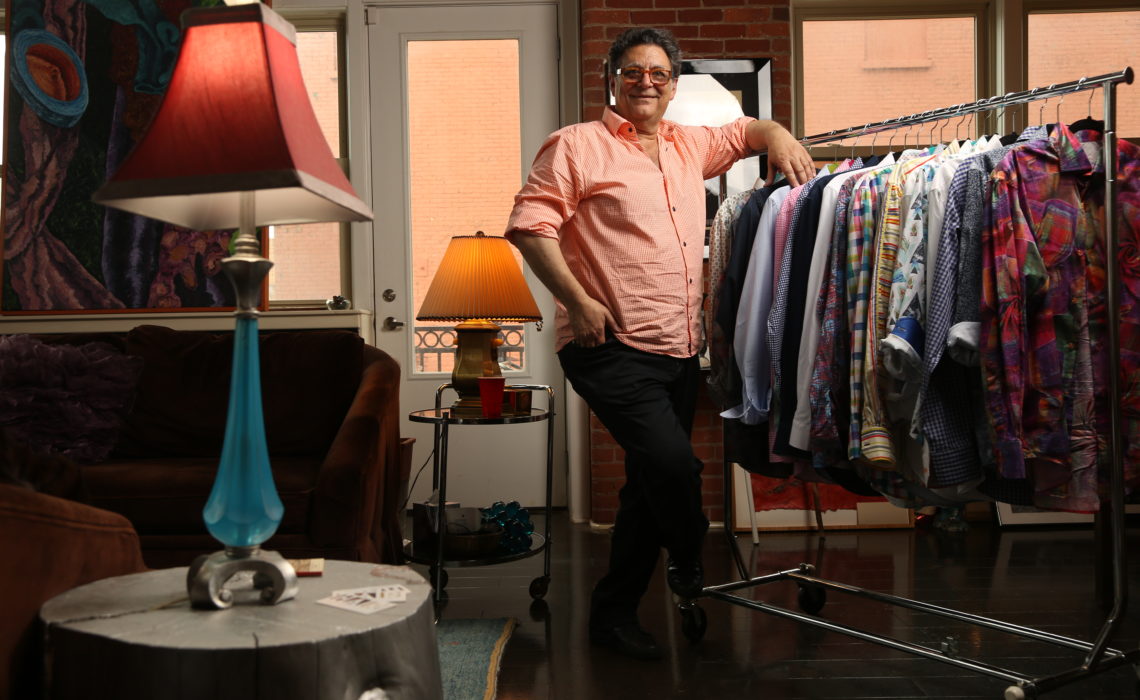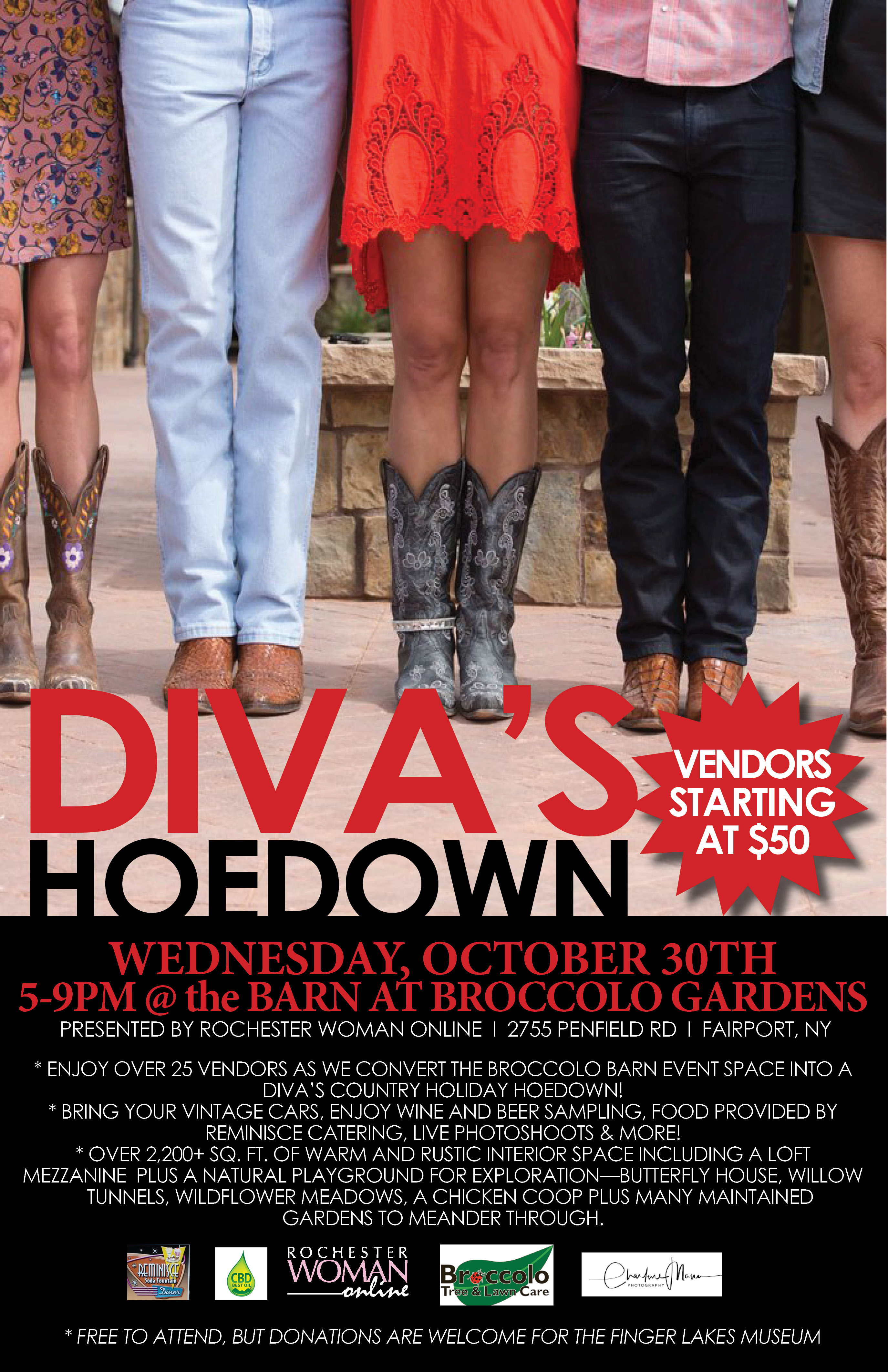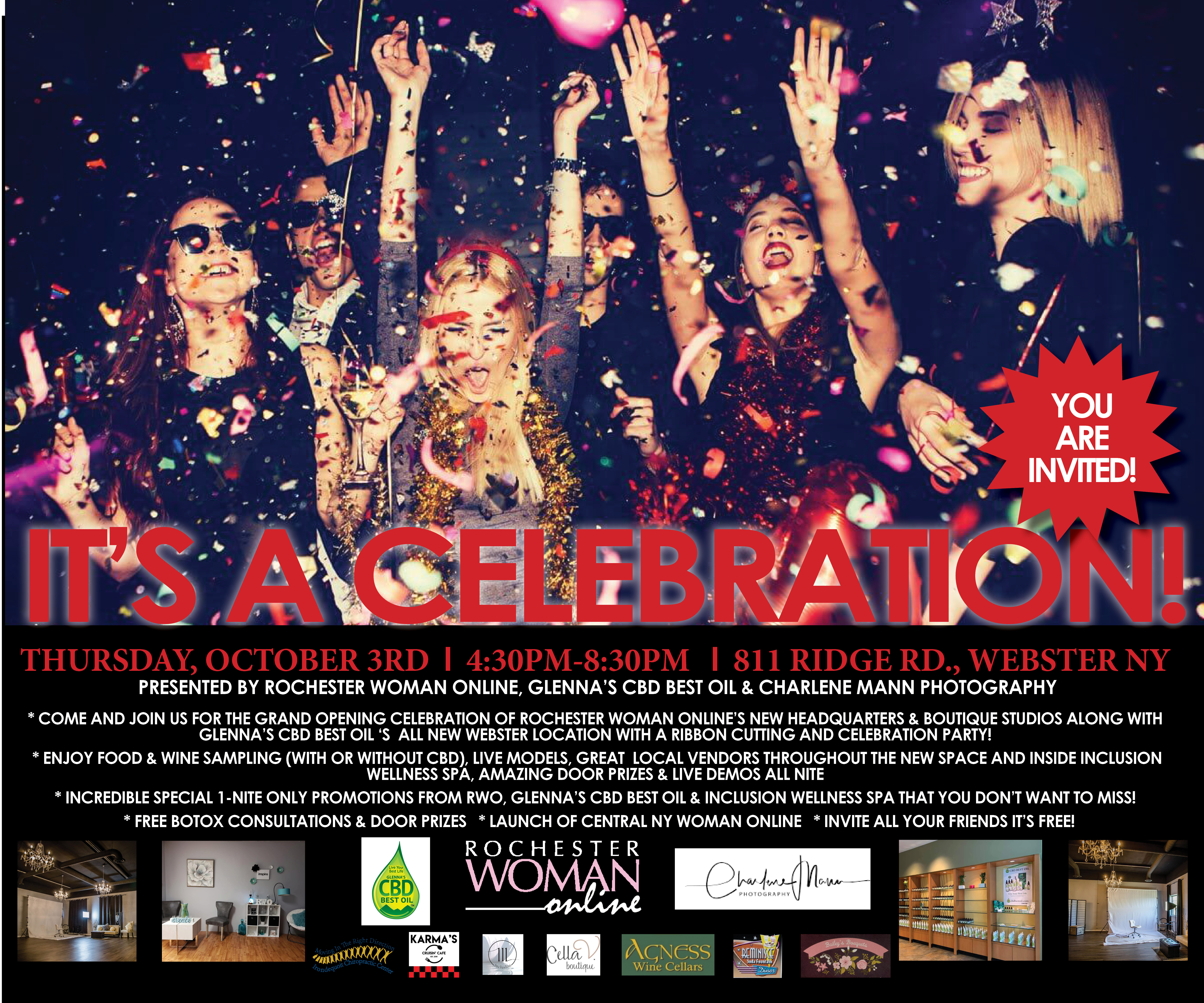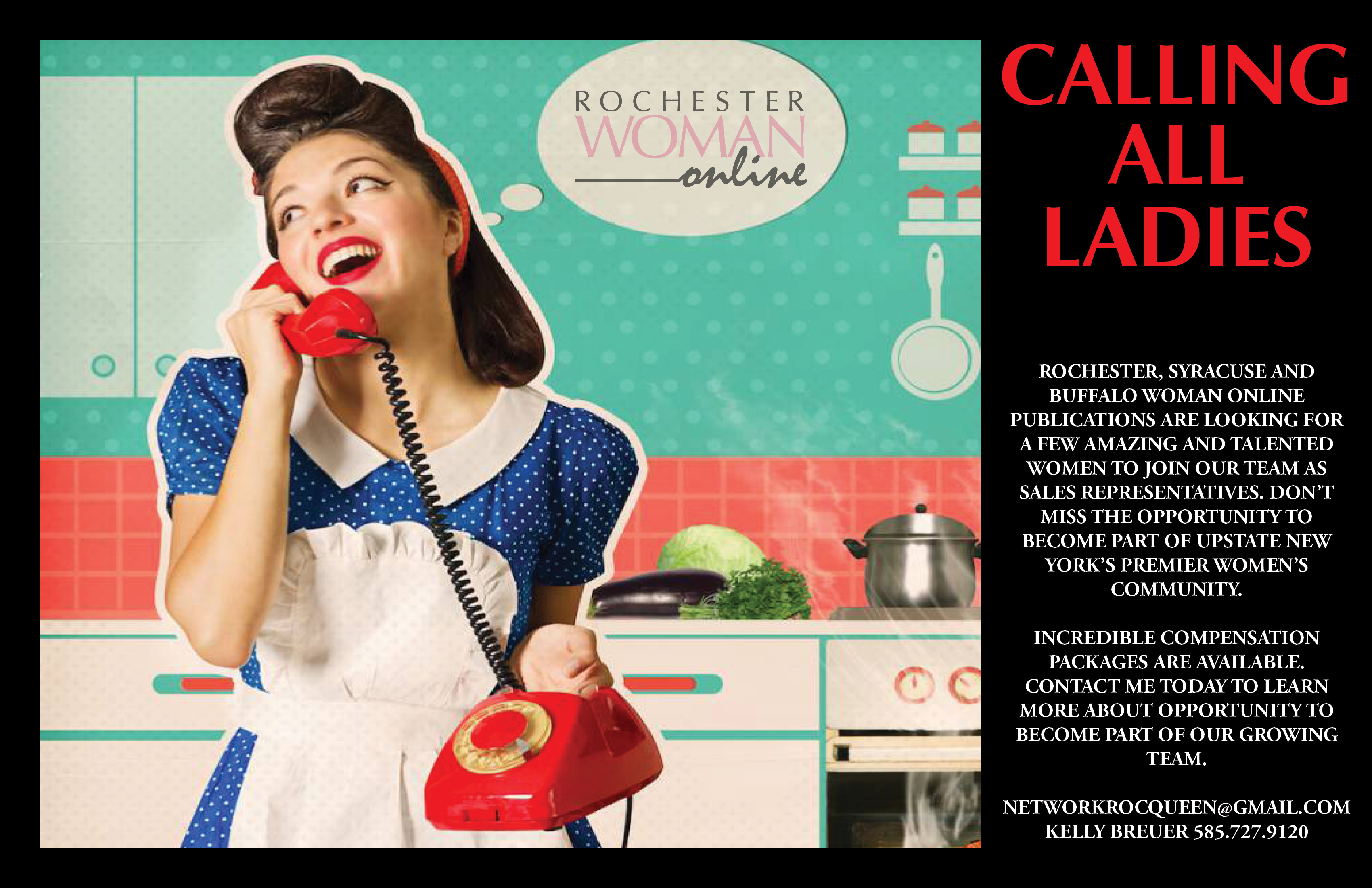PHOTOS BY CHRISTOPHER “GOODKNEWS” CARDWELL
A Fashion Life Lived…But Not Yet Complete
Even in an industry that changes daily, reinventing oneself isn’t the easiest of tasks. In music, we’ve seen it in the careers of someone like Madonna, but even she, one of the best at it, seems to be now traveling on flat tires. Often, initially designers and big design houses can do it with the input of a design team the head designer overlooks, and then completely by having other designers take over the duties of Head Designer.
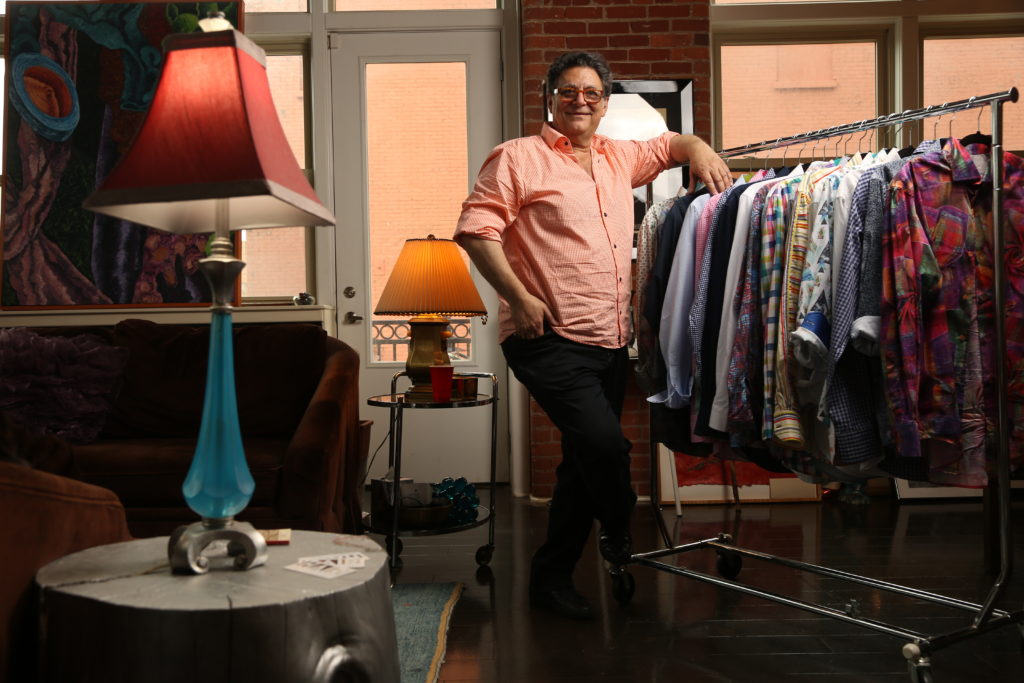 My career, both by choice and not, has been a long string of ups and downs, ins and outs, retail and wholesale, buying, selling, designing and manufacturing. A business that grew from local to national and then international markets was nearly derailed by backstabbing and a hard-battled law suit. Swimming in shark infested waters, watching boats filled with “friends” go past you and learning what in hindsight seems all too obvious; that one can only ever count on family and a handful of real friends. If reading this has got you exhausted, depressed and looking for the nearest exist, relax, this is a story of creativity and perseverance, and one can’t exercise perseverance without fighting back when being pushed.
My career, both by choice and not, has been a long string of ups and downs, ins and outs, retail and wholesale, buying, selling, designing and manufacturing. A business that grew from local to national and then international markets was nearly derailed by backstabbing and a hard-battled law suit. Swimming in shark infested waters, watching boats filled with “friends” go past you and learning what in hindsight seems all too obvious; that one can only ever count on family and a handful of real friends. If reading this has got you exhausted, depressed and looking for the nearest exist, relax, this is a story of creativity and perseverance, and one can’t exercise perseverance without fighting back when being pushed.
In 1978, freshly out of college and immediately dealing with a dose of the real world as an adult, I quickly realized that perhaps my studies of History, Political Science and Education were not enough to allow me to follow my idealistic ideas. Expanding the existing family business seemed like a wiser vehicle to pursue my ideals, and so I joined a family business that included alterations, custom clothing and dry cleaning. We embarked on adding men’s ready-made clothes and relatively quickly became known as one of the top-quality fashion stores in Rochester. It was here, at our store called Nahum Fine Clothing for Men in Brighton, that I learned to do fittings, selling, buying, and marketing. I learned about fabrics, and I learned everything there was to do in a retail operation, with the exception of learning how to sew; a calculated decision on my part. I knew, that if I would learn how to sew I would eventually be strapped down to a sewing machine with little opportunity for personal or business growth.
The business grew and became the point of reference in Rochester for fashion, carrying many designer labels exclusively, including many Italian labels. But as family businesses sometimes go, personalities and dreams began to clash and I made my exit with no set plan in place. It was important for me to move on in order to save any part of me that was worth saving. I had begun over time to friend some of the designers, often discussing colors and ideas for their collections. But while I had a good taste level, I really knew nothing about designing, manufacturing or the wholesale side of the business. I printed some tee shirts of original designs and headed to the East Coast to sell my tee shirts. In that period of time, as it became obvious that I had left the business, customers began calling me, one in particular asked what it was that I wanted to do. Even though relations had soured, I didn’t want to open a store in Rochester and compete with the family, so I decided delve into the wholesale side of the business.
I designed a collection of uniquely patterned and colorful ties, called EMANUELE CRAVATTE, named after my maternal grandfather. The tie collection quickly grew to include socks, then vests in my attempt to meet the minimum requirements to purchase silk. With the vests I ended up designing a vest that had never been done before, garnering the attention of international trade magazines. When I next expanded my classifications, I added shirts, but by then there was an expectation for the “different”. So, while I can love a classic shirt in a luxurious cotton as easily as I can a more fashion-oriented shirt, whether it was my perception or not, I felt like the market expected “different” from me, and different is what I gave them. I often joked that in order to create the unusual and still remain saleable to enough retailers to have a viable business was a walk on a high wire. Yes, I could design a shirt with a third sleeve coming out of the chest, but no one would buy it. So, while design, uniqueness, quality fabrics, both in make and look were important, these alone were not enough in the fashion industry. The fashion industry and the market it serves, want a story behind the brand to believe in, a personality to love and to get behind, a brand to become fans of. So many qualities, both learned and instinctive helped me with this, to the point of being selected by MR Magazine as Most Personality for the Best of the Luxury Market, 2007, tied with my very good friend and designer Bill Lavin.
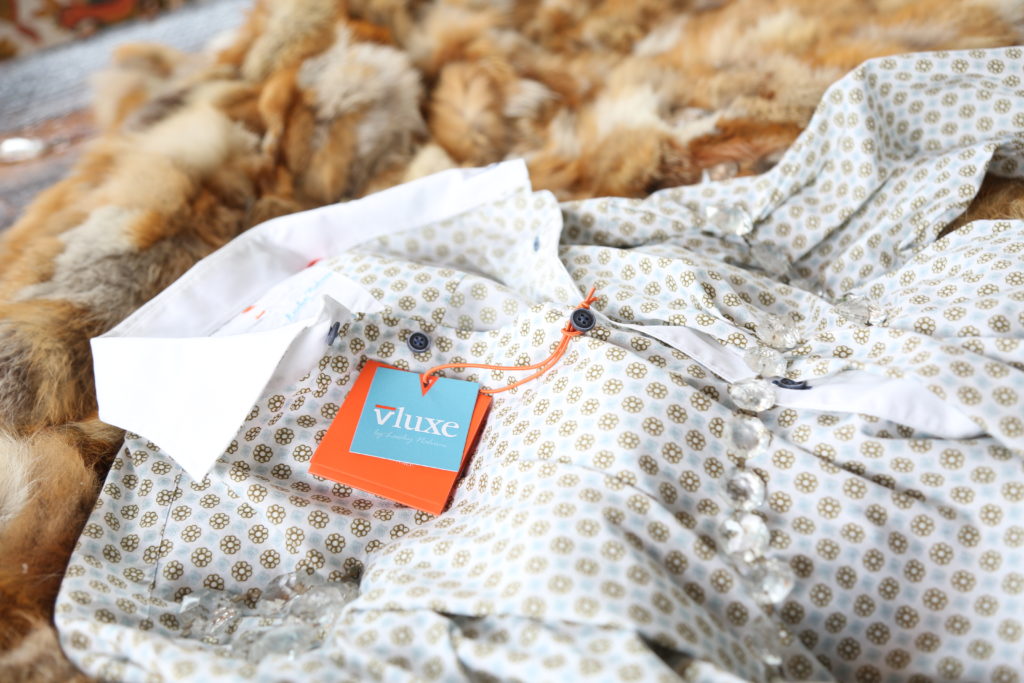 By this time, I had ventured into shirts and perhaps out of the need I felt to create a space for myself in the marketplace I began to create new models, viable, saleable models, yet models that were completely unique. As a result, and this is not scientifically proven, I may very well be the designer with the most unique shirt models anywhere. There was the Wired Shirt, which used telephone wire in the collar to make it turn and twist any which way you could want and inspired by young people at checkout counters, that couldn’t be bothered to iron the shirt they had to wear for work. The Double Collar, the One-Piece Collar, the Mixed Media, the Inverted Pleat Sleeve, the Split Sleeve, the Spiral, the Double Banded Collar to name a few. The trick with all of these models was not simply to be different for the sake of being different, as I’ve said… a third sleeve out of a chest would have done that, but the idea was to create a new, viable, subtle new look that would give the consumer a reason to buy a new shirt, that is, to buy a shirt he didn’t already have.
By this time, I had ventured into shirts and perhaps out of the need I felt to create a space for myself in the marketplace I began to create new models, viable, saleable models, yet models that were completely unique. As a result, and this is not scientifically proven, I may very well be the designer with the most unique shirt models anywhere. There was the Wired Shirt, which used telephone wire in the collar to make it turn and twist any which way you could want and inspired by young people at checkout counters, that couldn’t be bothered to iron the shirt they had to wear for work. The Double Collar, the One-Piece Collar, the Mixed Media, the Inverted Pleat Sleeve, the Split Sleeve, the Spiral, the Double Banded Collar to name a few. The trick with all of these models was not simply to be different for the sake of being different, as I’ve said… a third sleeve out of a chest would have done that, but the idea was to create a new, viable, subtle new look that would give the consumer a reason to buy a new shirt, that is, to buy a shirt he didn’t already have.
An extremely successful collaboration which began at $1.2 million in yearly sales when I entered it, grew to be a $7 million company in six years. Having totally rebranded the company, brand new, higher end designs, in stock programs in fashion shirts unheard off before us doing it, had made us the darlings of every high-end store in the US and Canada. Unfortunately, with unethical business practices facing me, I decided that I could no longer collaborate. That I had to leave what had been built and walk away. No contracts existed, no non-compete clauses to deal with, I was free to do as I pleased, and I was pleased to not renew my commitment and part ways.
On the shores of Conesus Lake in the Finger Lakes Region, while preparations for the Ring of Fire were taking place, my brain was spinning in amazing focus with ideas for a new brand and collection. It was pouring out of me in volumes like never before; I was fashionably possessed.
Friends who were there, to this day comment on how “possessed” I was, while in deep traffic on the ride back to Rochester. I was in the back seat designing the logo while my friend drove and cranked the tunes, too afraid that stopping now would halt this beautiful flow along with the intoxicating feeling of being in the zone.
On the first hour, of the first show (New York) of the first Vluxe Collection I was served with ten counts, a case that would encompass eight years of my life in a Federal Court, bicoastal travel, two law firms and three accounting firms, two of which were forensic accountants. And for what? To break me. To derail this new project. To kill Vluxe at its infancy. For pettiness. For jealousy. There doesn’t have to be much merit in the counts served in the USA, you can’t choose not to “play along”, you just have to deal with it.
This did almost break me, no doubt, but it didn’t. Today I’m still standing.
The business model I and pretty much everyone else operated under (many still do), consisted of designers putting together a collection at least twice a year. We would have samples made so that each sales representative covering their respective part of the US or Canada would have one, plus the one we would travel in order to use at the shows; New York, Chicago, Charlotte, Dallas, Los Angeles and Las Vegas. Buyers would make appointments to work with us to see the season’s new collection and place orders. There was a time when on the first day of a show, one could barely walk in the aisles due to the crowds. Today it is a far cry from that; there are less and less stores every day. The costs of doing the shows, if anything has gone up, while the number of stores to sell to has diminished. When these shows were over the representatives would fan out across the US and Canada while I would start the designing process again for next season in Europe working with the Fabric mills.
After years of designing many, many collections, many brands and many classifications; ties, socks, vests, shirts, knits, outerwear, leather jackets, gloves and jeans, I began to recognize that the industry was broken. I began to look for a new business model referring to that which we all worked under as the “Old Model”. The obvious issues to me were the shortage of viable stores and the increasing costs of doing business with diminishing returns. But how to change a system set to do business under the Old Model? The supply chain was set up to work in a certain manner and timing that didn’t match what I was leaning towards. I evaluated what it was that I ultimately wanted to do, and that was to continue creating a beautiful product. But, this wasn’t one piece of art, this was ready made clothing, that required designing, manufacturing and distribution. I thought that for me the solution would be to shorten the distance between the design and the end consumer, eliminating everything in between. Unfortunately, the supply chain to operate in this manner was lacking. With a shortage of answers, I chose to retire to write two books, one, on how it is that my family ended up in the USA as political refugees in 1967 called Neither Here Nor There, and the second about the one brand that has always been near and dear to me, the brand that I felt was most inspired; Vluxe, named Connecting The Dots. After a couple of years, missing the industry, my friends in it, and feeling like Howard Hughes with a lot less money, an offer for the Vluxe brand to be franchised came along and I took it.
I realized that while the industry had continued to deteriorate, I was now not alone in the search of a business model. Fabric mills had begun producing non-basic fabrics outside of their twice-a-year collections we would view and buy at fabric shows of Paris and Milan. Factories, were willing now to work on much lower minimums without making the prices unbearable.
 And so, a door had been opened. Leveraging my reputation to work with suppliers I may not have worked with before, but had adapted and adopted the New Model, I began to put forth a plan; a simple one, a transparent one.
And so, a door had been opened. Leveraging my reputation to work with suppliers I may not have worked with before, but had adapted and adopted the New Model, I began to put forth a plan; a simple one, a transparent one.
I would design and manufacture the shirts and gloves and have them produced overseas. In the meantime, I would also design, shoes, bags, belts, luxury leather accessories, knits, sweaters and jeans all to be made as special orders, in other words, made to order. Complete transparency on the web shows you how I achieve our pricing. As an example, in the Old Model, when I would land a shirt at the cost of $45, I would have to sell it to the retailers for $90. The retailer, to keep up with the expenses of running a store, would have to triple it and thus bringing the cost of the shirt to the consumer to $270. Today, a shirt that lands at $45 is sold directly to the consumer at $90, an incredible value for the consumer.
I would no longer do the shows but instead use two channels of distribution, e-commerce and a Fashion Truck. The idea of the Fashion Truck is mainly to partner up with corporations to allow them to offer our services to their employees as an added value for working there. We are also available for private events, and on an individual basis. The first of its kind in the US, a Men’s Designer Direct To You Fashion Truck brings to you a selection of beautiful garments, allowing you to shop wherever you may be.
The big picture is to in essence “replace” the lost stores, by offering the Fashion Truck for franchising. A young man or woman, without very much of a credit history can spend considerably less that he or she would by opening a brick and mortar AND, by having all the freedom a store doesn’t offer; mobility and your very own hours. While we’ve already had requests, I don’t feel we’re yet ready for it, but it does confirm that I’m on to something.
There is still much for me to say in fashion, and I hope to continue saying it. The website www.alwaysgetlucky.com is where all our products can be found; where shoes, bags, belts and luxury leather accessories are customizable by you in 3D, where you can contact us for the knits, sweaters and jeans, as well as to reserve a visit on the Get Lucky Fashion Truck.
